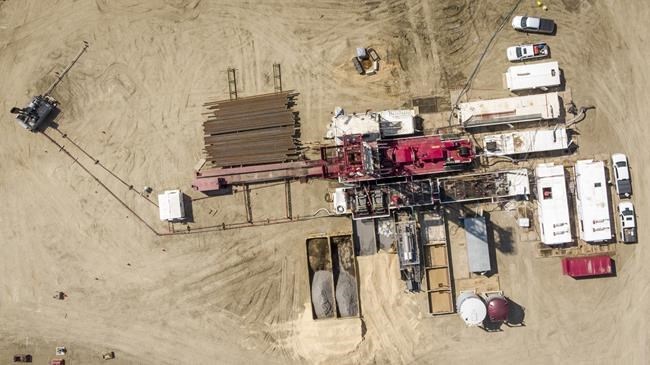CALGARY — As Canada's energy sector seeks to capitalize on high oil and gas prices and recover from a six-year downturn, a shortage of rig workers threatens to curtail the industry's growth.
After years of depressed prices, layoffs, and consolidation, oil and gas companies in Western Canada are once again ramping up production — this time to meet rising global energy demand as COVID-19 restrictions ease around the world.
According to The Canadian Association of Energy Contractors (CAOEC), there were 175 active drilling rigs in Canada last week, compared to just 75 in the same period last year and 155 in 2019. With the North American benchmark West Texas Intermediate trading this week at more than US$80 per barrel — a seven-year-high — the number of direct and indirect jobs in the oil and gas services sector is up 130 per cent year-over-year, said CAOEC chief executive Mark Scholz.
"That's an increase of 20,750 jobs, so the industry is very bullish on activity," Scholz said in an interview. "But the challenge is, we're trying to ramp up so quickly that we're dealing with capacity restraints."
Already, companies seeking to increase oil and gas output this year are running into labour market challenges. Data from PetroLMI, an industry labour market information provider and a division of EnergySafe Canada, shows the unemployment rate in the Canadian oil and gas services sector fell from 17.7 per cent in September 2020 to 3.7 per cent in September 2021. In Saskatchewan, the current unemployment rate among oil and gas services workers is essentially zero.
"We’re already starting to hear some of our members indicate to our clients, who are the oil and gas producers, that we don’t have any rigs available. And it’s largely due to crew shortages," Scholz said. "So it's going to have an impact on our ability to increase production."
PetroLMI vice-president Carol Howes said the biggest problem facing the industry is that while employment is up substantially, the size of the oil and gas service labour force remains largely unchanged from last year. Historically, many rig workers in Western Canada have come from other parts of the country, particularly the East Coast, and they went home when the COVID-19 pandemic hit. Many of those workers are reluctant to return to their jobs as long as the threat of the virus and its associated travel-related challenges continue, Howes said.
But even before the pandemic, the oil and gas sector's labour force was eroding. Between 2013 and 2019, driven by collapsing oil prices, employment fell by 21,200, or 29 per cent, in the services sub-sector. An additional 6,300 jobs were lost in 2020, according to PetroLMI.
"It has been building over the last number of years, ever since the oil price decline at the end of 2014," Howes said. "We saw layoffs starting to occur, we saw a decline in activity, and a lot of workers went elsewhere — whether that was to a different province, a different industry or a different job."
Scholz said workers have historically been attracted to the oilpatch because of the high wages, and he said those wages have already increased by about 10 per cent on average this year as employers compete for labour. But he said experienced workers who left the industry due to the pandemic or an oil price crash-related layoff aren't necessarily going to be enticed back for a paycheque.
"I think many workers are looking at this as 'OK, I might be making a little less per hour now, but I get to come home every day and I'm close to my family and friends," he said. "They've made a conscious choice to take a job with lower overall compensation, but with a lifestyle that's more in line with what they're comfortable with."
Many workers may also feel jaded after years of depressed prices, layoffs and instability in the sector, Scholz added. And while commodity prices are surging right now, the sector is still in its early phase of recovery, he said.
"When you tell people, ‘well, we have work for you for the next couple of months,’ that isn’t selling well. Just like everyone else, people want to have stability and consistency at work," Scholz said. "I think the industry will likely get there eventually, where we're able to offer consistent work, but at this point we're still in this kind of intermediary phase."
This report by The Canadian Press was first published Oct. 13, 2021.
Amanda Stephenson, The Canadian Press



